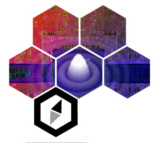 |
COMPASS
5.0.0
End-to-end AO simulation tool using GPU acceleration
|
 |
COMPASS
5.0.0
End-to-end AO simulation tool using GPU acceleration
|
Initialization of a Target object. More...
Functions | |
| def | target_init (carmaWrap_context ctxt, Telescope telescope, list p_targets, conf.Param_atmos p_atmos, conf.Param_tel p_tel, conf.Param_geom p_geom, dm=None, brahma=False) |
| Create a cython target from parametres structures. More... | |
Initialization of a Target object.
This file is part of COMPASS https://anr-compass.github.io/compass/
Copyright (C) 2011-2019 COMPASS Team https://github.com/ANR-COMPASS All rights reserved. Distributed under GNU - LGPL
COMPASS is free software: you can redistribute it and/or modify it under the terms of the GNU Lesser General Public License as published by the Free Software Foundation, either version 3 of the License, or any later version.
COMPASS: End-to-end AO simulation tool using GPU acceleration The COMPASS platform was designed to meet the need of high-performance for the simulation of AO systems.
The final product includes a software package for simulating all the critical subcomponents of AO, particularly in the context of the ELT and a real-time core based on several control approaches, with performances consistent with its integration into an instrument. Taking advantage of the specific hardware architecture of the GPU, the COMPASS tool allows to achieve adequate execution speeds to conduct large simulation campaigns called to the ELT.
The COMPASS platform can be used to carry a wide variety of simulations to both testspecific components of AO of the E-ELT (such as wavefront analysis device with a pyramid or elongated Laser star), and various systems configurations such as multi-conjugate AO.
COMPASS is distributed in the hope that it will be useful, but WITHOUT ANY WARRANTY; without even the implied warranty of MERCHANTABILITY or FITNESS FOR A PARTICULAR PURPOSE. See the GNU Lesser General Public License for more details.
You should have received a copy of the GNU Lesser General Public License along with COMPASS. If not, see https://www.gnu.org/licenses/lgpl-3.0.txt.
| def shesha.init.target_init.target_init | ( | carmaWrap_context | ctxt, |
| Telescope | telescope, | ||
| list | p_targets, | ||
| conf.Param_atmos | p_atmos, | ||
| conf.Param_tel | p_tel, | ||
| conf.Param_geom | p_geom, | ||
dm = None, |
|||
brahma = False |
|||
| ) |
Create a cython target from parametres structures.
:parameters: ctxt (carmaWrap_context) : telescope (Telescope): Telescope object p_targets (lis of Param_target) : target_settings p_atmos (Param_atmos) : atmos settings p_tel (Param_tel) : telescope settings p_geom (Param_geom) : geom settings dm (Param_dm) : (optional) dm settings brahma (bool): (optional) brahma flag :return: tar (Target): Target object
Definition at line 61 of file target_init.py.